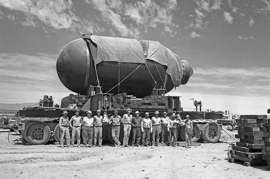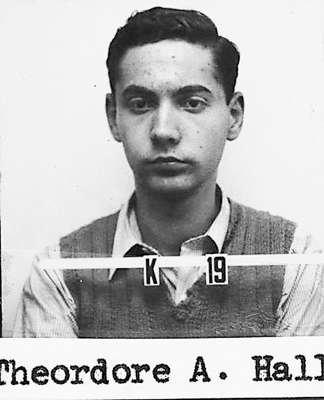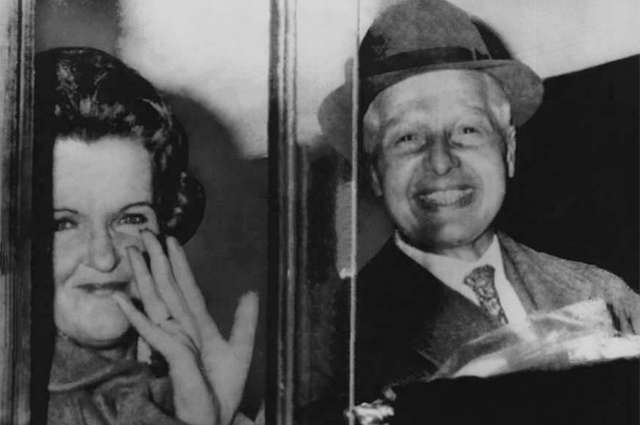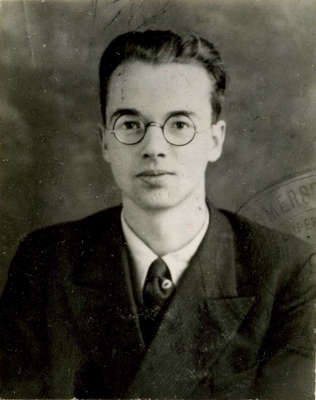
On July 16, 1945, the first successful nuclear test took place. At the Alamogordo test site in the United States, they detonated the “Thing” – the first plutonium bomb.
In 1971, 50 years ago, the world learned about the Pentagon's plans to launch a nuclear strike against the USSR – former US Department of Defense consultant Daniel Ellsberg published 500 pages of classified documents.
About who thanks to whom one of the greatest catastrophes of the twentieth century. was prevented, says the deputy director of the Institute of State and Law of the Russian Academy of Sciences, writer, senator of the International Association of Prosecutors, from 2000 to 2016 Deputy Prosecutor General of the Russian Federation Alexander Zvyagintsev.
The Americans tested the world's first nuclear bomb on July 16, 1945 at the Alamogordo test site in New Mexico. And on August 30, 1945, just two weeks after Japan's surrender, Major General Loris Norstad, the US Air Force's Deputy Chief of Staff for Planning, sent General Groves a document where “key Soviet cities” appeared as the targets of a possible future nuclear strike. They even indicated the number of atomic bombs required to destroy each of them. So, Moscow and Leningrad were assigned six bombs each.
The Americans developed the doctrine of an unrequited nuclear strike – they did not believe that the Soviet Union would be able to oppose anything to them. But in August 1949, a US meteorological plane suddenly detected isotopes in the air near Kamchatka. This meant only one thing: the Soviet Union also has an atomic bomb! But how did the Russians manage to create a superweapon in just four years?
This became possible thanks to Operation Enormoz (“something monstrous” – Eng.), Which went down in the history of the Soviet special services as one of the most difficult and most important in the entire XX century. The 17-volume case “Enormoz” under number 13676 was kept in the SVR archive for many years under the headings “Top secret”, “Keep forever”, “Burn in danger”. And only recently it was partially declassified.
At one's own risk
On June 15, 1940, an article by the American scientist MacMillan on the nuclear topic appeared in the Physical Review. It was followed by a suspicious “nuclear lull” in the Western press. It caught the eye of the head of the scientific and technical intelligence of the USSR, Leonid Kvasnikov. He, a chemical engineer by training, dreamed of becoming a major scientist. But fate decreed otherwise. In 1938, a young graduate student of the Moscow Institute of Chemical Engineering was unexpectedly invited to the Lubyanka and was told that in all respects he was suitable for work in the NKVD. It was not accepted to say “no” at Lubyanka …
The failed scientist Kvasnikov, now on duty, read all the foreign scientific press. And, having discovered the loss of publications on the nuclear topic, he immediately suspected that the research was classified for military reasons. He reported his suspicions to the chief of foreign intelligence Fitin and asked for permission to send urgent encryption programs to Western residencies … The wise Pavel Fitin did not need to be explained anything, and he gave the go-ahead to Kvasnikov to work with the residencies. So the Soviet foreign intelligence, thanks to the decisiveness of its leader, on its own initiative, began to develop a nuclear topic.
Residents in the United States, France, England, Germany and Sweden were sent encrypted messages: “We ask you to identify research centers where research on uranium has been and can be carried out, and to ensure that information about practical work is received from there.” During the year, foreign residencies received confirmation that Western countries were independently conducting nuclear research.
At the same time, Hayk Hovakimyan (operational pseudonym “Gennady”) returned from the United States. Since 1934 he lived in America under the guise of an engineer “Amtorg”, since 1938 he headed the American residency, recruited more than a dozen agents, but on May 5, 1941 he was arrested by the FBI … The charge of espionage is a direct road to the electric chair , but the employees of the Soviet “Amtorg” enjoyed immunity from criminal prosecution. The Americans were forced to release Hovakimyan. He urgently left for Moscow and took with him the oral communication for the “Center”.
Hovakimyan's agent said that back in 1939, scientists Teller and Szilard persuaded Einstein to sign a letter they had prepared to Roosevelt. The letter theoretically proved the possibility of creating an atomic bomb and explained its special danger if it were in the hands of Hitler. There was also a request for financial support for the experimental work. The owner of the White House was shocked by this letter, and at the end of the same year, a government Uranium Advisory Council was established in the United States.
On September 25, 1941, the most valuable information came from London: “The uranium bomb may well be developed within two years. Fergusson, chairman of the Wulich Arsenal, said that the detonator of the bomb could be constructed in a matter of months. ” The London residency received information about the plans of the Uranium Committee (this government organization oversaw the British nuclear program) from one of the members of the so-called “Cambridge Five” – Donald McLean. He and four other Englishmen – Kim Philby, Anthony Blunt, Guy Burgess and John Kerncross, holding high positions in British government agencies, for years passed invaluable information to Soviet intelligence. A couple of days later, the London residency had at its disposal the full text of the report of the Uranium Committee, which was brought by another member of the “five”, John Kerncross.
With all this information, the chief of foreign intelligence Fitin went to report to Beria. But the People's Commissar did not believe the reports of the residents. Stalin also reacted coolly to reports from foreign intelligence.
Nevertheless, Fitin, Ovakimyan, Kvasnikov and other intelligence officers of Soviet foreign residencies for a whole year, bit by bit, extracted invaluable information – at their own peril and risk. Until a critical mass of evidence had accumulated, which could no longer be ignored.
In the role of catch-up
In February 1942, a German officer was killed near Taganrog. A diary with formulas was found in his travel bag. Scientific expertise has established: these were calculations indicating German work on the fission of uranium. Stalin finally came to believe in the reality of nuclear weapons. In February 1943, a secret laboratory No. 2 was created, headed by a young scientist Kurchatov. Later, intelligence officer Leonid Kvasnikov recalled the words of Kurchatov at their first meeting: “The Americans have 200 thousand people working on the atomic project. We only have 100 scientists and researchers. We found ourselves in the role of catch-up and rely very much on your help. We need any information that would reflect the level of study of various problems by scientists in the United States and England. “
The scouts now had a specific task – to shorten the path of Soviet scientists from the beginning of a nuclear program to a finished bomb as much as possible. For this it was necessary to take possession of the secret nuclear developments of England and the United States. Soviet intelligence officers managed not only in the shortest possible time to establish an extensive network of agents in the West. They managed to infiltrate their agents in Los Alamos, a classified nuclear city near Albuquerque, where the development and production of the first nuclear bomb was carried out. In the image and likeness of Los Alamos, then all Soviet closed cities – “post boxes” will be built.
Only a few people were allowed to participate in Enormoz – the intelligence chief Fitin himself, his deputy Ovakimyan, Leonid Kvasnikov (he left to supervise the New York station) and Potapova, the translator from English. Zarubin, Semyonov, Feklisov and Yatskov worked in the USA; in England – Gorsky and Barkovsky.
The scouts were faced with the most difficult task: not only to find the right people who were admitted to nuclear development, but also to ensure them “cleanliness”, that is, not to expose them to attack. The names of most of their sources of information have not yet been disclosed by Soviet intelligence officers …
One hot summer day, a young dark-haired man approached the building of the Soviet consulate in New York. Shifting from foot to foot, he told the guard: “I want to meet with one of the Soviet representatives. To the question “why?” replied that he had important information for the Soviet Union. It was Theodore Hall, the youngest scientist at the Los Alamos Laboratory. He was only 19.

Theodore Hall at the time of his arrest in 1961
A tall man of strong constitution came out to meet him, let's call him Kornyakov. Hall began to tell him that he could transfer important secret documents from the Los Alamos laboratory to the Soviets, since he was carried away by socialist ideas as a student and was very sympathetic to the Soviet Union. “You, too, must own a nuclear bomb … to be able to defend yourself,” Hall added at the end of the conversation and thrust the package into Kornyakov's hands. These were blueprints for the Fat Man plutonium bomb that would later be dropped on Nagasaki. So Hall began working for Soviet intelligence.
Getting into Los Alamos was nearly impossible. At least, General Groves, the military curator of the nuclear project, thought so. Even the citizens of America were not allowed to enter there. The largest scientists involved in the project were listed under false names and surnames, laboratory employees – under numbers and did not even have a driver's license in their name. After 22 hours, the laboratory staff could not leave their apartments, their phones were constantly tapped. General Groves liked to say, “We've created a defense system that even a mouse can't get through.” It did not even occur to him that Soviet informants were working in this impregnable fortress.
There were many Soviet agents among the scientists. As a rule, they did not know about each other and worked for the Soviet Union not for money, but solely for the idea. Realizing how destructive weapons would soon be in the hands of the United States, they did not want them to become an instrument of political blackmail. In 2020, during the filming of the documentary “Bomb. Ours in Los Alamos “Charles Oppenheimer, the grandson of Robert Oppenheimer, the scientific director of the” Manhattan Project “confessed to us:” When he realized that he had created an apocalyptic weapon, he said: “Humanity will forever curse the very name of Los Alamos, where the main secret laboratory was located American Nuclear Project “. And who could then oppose the United States? Only the Soviet Union!
Theodore Hall was highly respected by his colleagues and had access to the most classified materials. In Operation Enormos, he received the pseudonym Mlad.

After 8 years in prison, the Coen couple ended up in Moscow – they were exchanged for an MI5 agent arrested in the USSR. 1969 year
Hall met with “Leslie” in Albuquerque, a resort town near Los Alamos. She was waiting for him in the evening on a bench in the park. Arriving at the meeting, Hall saw a beautiful stately woman in an impeccable suit. He handed her the undeveloped film (that was the instruction from above, so that the film could be illuminated in case of anything). “Leslie” put it in a box of sanitary napkins and left. It was Leontine Cohen. She and her husband Morris worked for Soviet intelligence – like Hall, for the idea. When they met, Morris was already an illegal agent (operational alias “Louis”).
The Coens will be arrested when Operation Enormos is complete. This will happen in 1961 in England: there they continued to carry out assignments of the Soviet foreign intelligence, portraying collectors of antique books. According to Maurice Cohen, “Books are the most convenient thing to transfer data. You can write with invisible ink between the lines. Parcels can be safely sent by mail anywhere. “
Morris will be sentenced to 25 years in prison for working for Soviet intelligence in Great Britain, and Leontine – 20. In 1969, they will be exchanged for the MI5 agent Gerald Brook, who was arrested in the USSR.
Theodore Hall would also be exposed in the 1960s as a result of the American counterintelligence operation Venona. But since the “Venona” itself was classified and it was impossible to present secret documents in court, Hall was not jailed, but simply fired. He left the States for England and worked quietly at the Cambridge Cavendish Laboratory until the Venona documents were declassified in 1995. Hall's juicy biographical facts surfaced, and in 1997 he confessed to working for Soviet intelligence. And until the end of his life he was forced to explain to Western journalists why he made such a decision.

German émigré scholar Klaus Fuchs
The hero was almost forgotten
Hall, “Louis” and “Leslie” were far from the only Soviet foreign intelligence agents in the Manhattan Project. Even before the official start of Operation Enormoz, at the end of 1941, a lanky man came to the Soviet embassy in London and asked to take him to Ambassador Ivan Mikhailovich Maisky. The visitor said that he had important information for the Soviet government about the development of a powerful weapon previously unknown in the world, that England was developing it secretly from its ally, the USSR, and therefore he decided to correct this injustice. It was a German émigré scientist Klaus Fuchs (in the Enormos case he appeared under the pseudonym Charles).
Fuchs – a graduate of Leipzig University, in the fall of 1933 fled to England from the rampant fascism and Nazi repression. At the beginning of 1941, he, a talented physicist, joined a group of scientists who worked to clarify the critical mass of uranium and the problem of isotope separation. So he found himself first at Tube Elois and then at the Manhattan Project. Ironically, after moving to Los Alamos, Fuchs shared a room with Hall for a while. But they both learned that they were working for Soviet intelligence only after they were exposed … Fuchs gave the USSR invaluable information about the gaseous diffusion method for separating isotopes, named the names of the largest physicists in Europe, who, like him, fleeing from fascism, emigrated to England and began to work on an atomic project. They were Einstein, Szilard, Fermi, Frank, Frisch and many others.
Fuchs was arrested in 1950 when he had already returned to the UK. The United States demanded Fuchs' extradition, but the British refused and thereby saved his life. He was sentenced to 14 years in prison for espionage. But he left ahead of schedule and went to his homeland, to East Germany, where he was engaged in teaching activities until the end of his life.
Many left-wing physicists and mathematicians were involved in the work on the bomb, who “leaked” the secrets of the “Manhattan Project” of the USSR. I must say that Oppenheimer at one time also sympathized with the communist movement, the FBI suspected him of spying for the USSR, and the great scientist was even summoned to the carpet to the Commission on the Investigation of Anti-American Activities.
All information received by our foreign residencies was immediately sent to Moscow. In 1943-1945. of the employees of the Kurchatov Laboratory No. 2, which was engaged in the atomic project, only Kurchatov himself had access to the case file. The papers were handed over to him personally against receipt. And it was only allowed to work with them in the Kremlin or in a special room that was set aside for this on the Lubyanka. Kurchatov was not allowed to involve either secretaries or his colleagues in preparing reviews and assessments of these materials, as well as subsequent assignments to intelligence. For two or three years he did it all himself. The information that he received from intelligence, he was recommended to transmit to colleagues orally and without mentioning sources.
Recently declassified documents in the Enormos case contain several hundred pages, handwritten in illegible handwriting. These are Igor Kurchatov's notes with diagrams, formulas, and clarifying questions. Some of them were transferred to the Kurchatov Institute, where the mothballed first Soviet nuclear reactor still stands in the underground bunker. Kurchatov's employees did not even suspect that these notes existed at all. But, in fact, this is the first Soviet textbook on nuclear physics written by hand.
After the successful tests of the first Soviet nuclear bomb RDS-1 (it was detonated on August 29, 1949 at the Semipalatinsk test site), Stalin presented a long list of all those who participated in the nuclear project for awards. It is known that Beria prepared this list in advance. And in case of failure, he would have turned from an award to a firing squad.
Imagine Kurchatov's surprise when he saw only five intelligence officers on this list. Of course, he did not know all of them by name, just when he saw five unfamiliar surnames, he immediately understood that this was intelligence. The list included Semyon Semyonov (“Twain”), Anatoly Gorsky (“Vadim”), Alexander Feklisov (“Kalistrat”), Vladimir Barkovsky (“Jerry”) and Anatoly Yatskov (“Yakovlev”). Kurchatov was well aware that in fact there were many more of them – people who all this time literally in the dark paved the way for the Soviet nuclear scientists. But since Kurchatov personally communicated with only one person – Leonid Kvasnikov, he was deeply shocked that he could not find his last name in this short list …
At that moment Kurchatov already enjoyed the authority of incredible proportions and was not afraid to ask the author of the list with the question: “But what about Kvasnikov?” Beria could not find what to answer and simply added Kvasnikov to the list retroactively …

